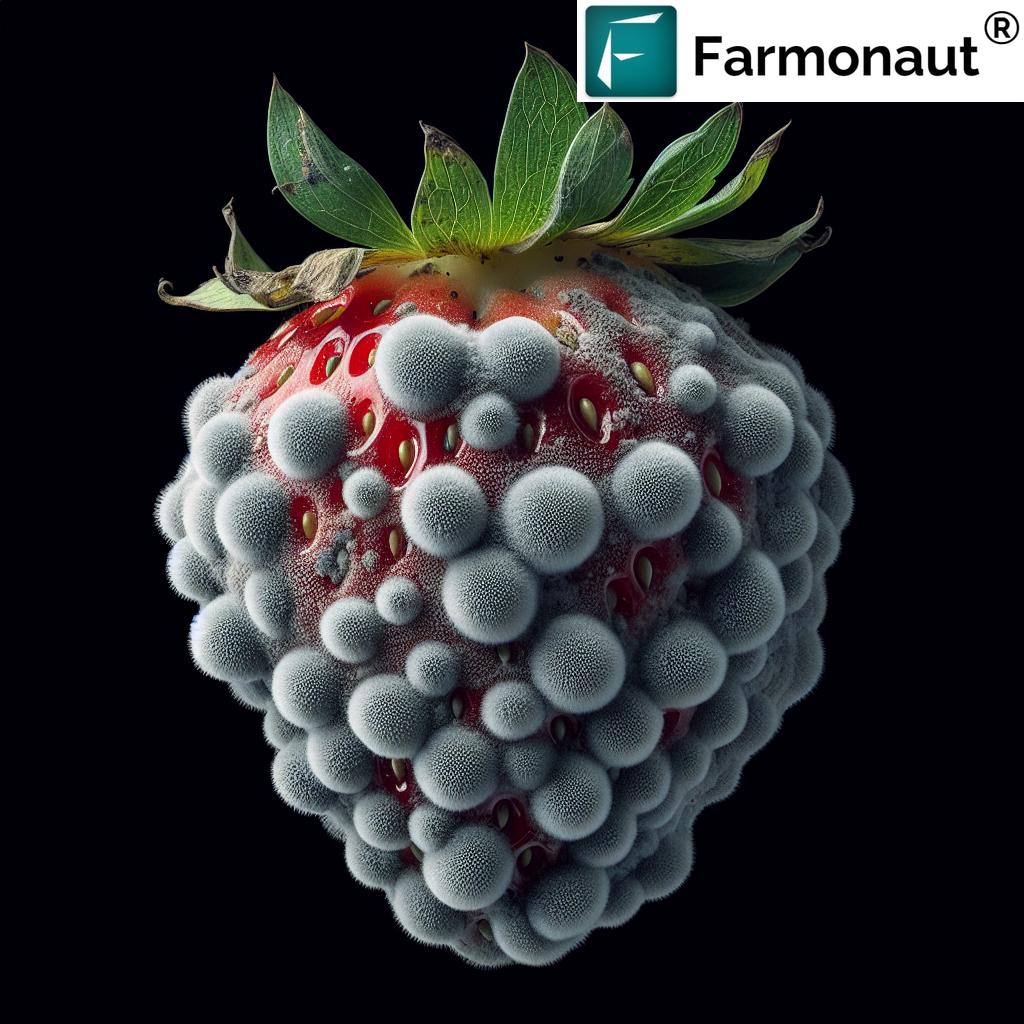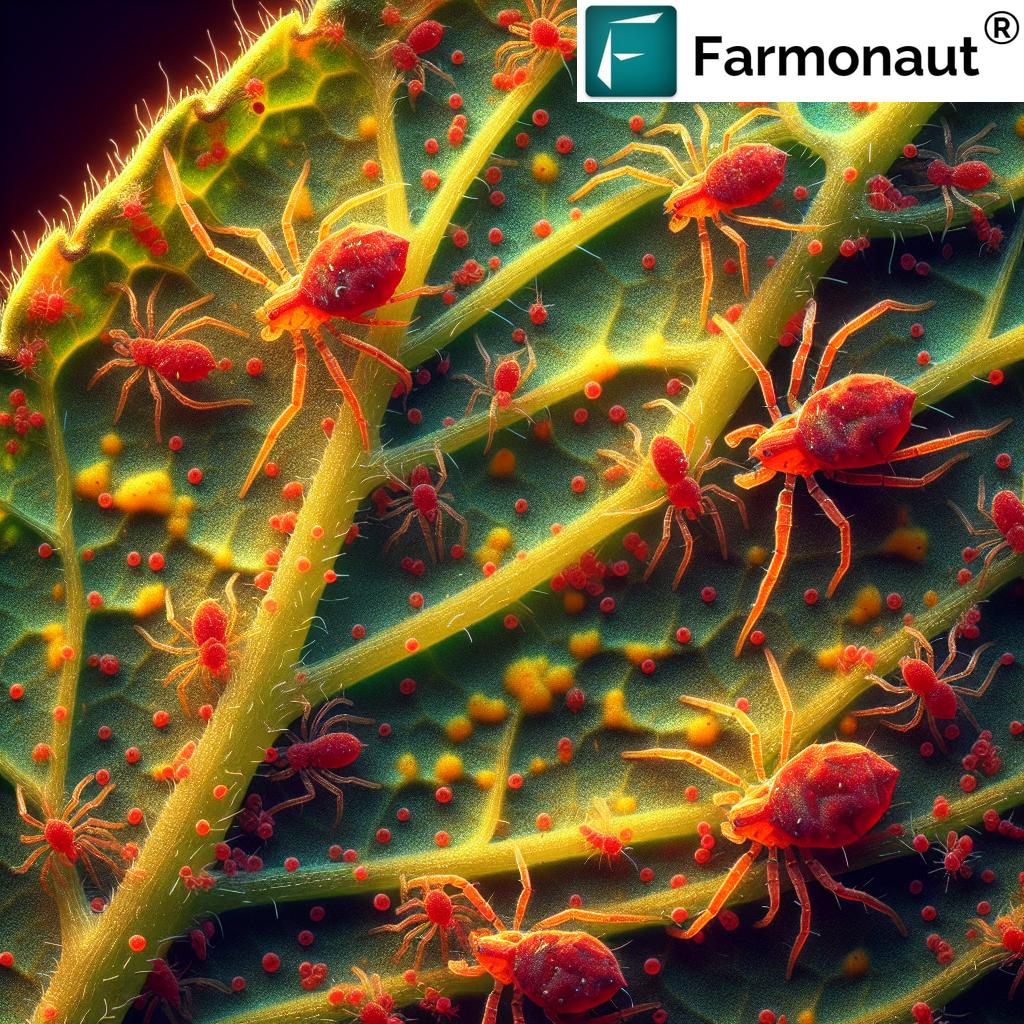
Stemming the Tide of Irrigation Water Waste in the US: A Comprehensive Guide
Water is the lifeblood of agriculture, and its wastage poses a critical challenge to sustainable farming in the USA. As we delve into this pressing issue, we’ll explore the causes, consequences, and innovative solutions to combat irrigation water waste. At Farmonaut, we’re committed to transforming water management with cutting-edge technology, empowering farmers to embrace sustainability, conserve water, and boost yields.
The Scope of the Problem
The scale of irrigation water waste in the United States is staggering:
- Approximately 50% of irrigation water is wasted daily
- This amounts to a shocking 128 billion gallons of water wasted every day
- Agriculture accounts for about 70% of the world’s freshwater usage
- Of the water consumed in agricultural activities, 40% goes to waste via evaporation and poor irrigation

This chart illustrates the distribution of irrigated agricultural acreage across the United States, highlighting the states with the highest irrigation water usage. It’s clear that addressing irrigation efficiency in these key states could have a significant impact on overall water conservation efforts.
Why Does Irrigation Water Go to Waste?

Several factors contribute to the widespread waste of irrigation water:
- Outdated Irrigation Techniques: Old-fashioned methods like flood irrigation are inefficient, leading to significant water loss through evaporation and runoff.
- Poor Irrigation Practices: Lack of proper maintenance and calibration of irrigation systems can result in uneven water distribution and unnecessary waste.
- Lack of Water Management: Without careful monitoring, farmers may over-irrigate, applying more water than crops actually need.
- Ineffective Water Delivery Systems: Leaky pipes and channels can waste substantial amounts of water before it even reaches the crops.
- Inadequate Training and Education: Farmers may not be aware of the latest water conservation techniques and technologies.
The Critical Problems Arising from Irrigation Water Waste

The consequences of irrigation water waste extend far beyond the farm, affecting the environment, economy, and public health:
Environmental Degradation
- Groundwater pollution due to increased use of pesticides and fertilizers
- Soil salinity, disrupting natural ecosystems and reducing agricultural productivity
- Contribution to water scarcity issues, affecting both human and wildlife populations
Economic Losses
- Inefficient use of resources leading to higher operational costs for farmers
- Reduced crop yields due to poor water management
- Increased energy consumption for pumping and distributing excess water
Water Scarcity
- Exacerbation of existing water shortages in many regions
- Increased competition for limited water resources between agriculture and other sectors
- Potential for conflicts over water rights and access
Health Risks
- Contamination of water sources with agrochemicals, posing risks to human and animal health
- Increased prevalence of water-borne diseases in areas with poor water quality
Sustainability Challenges
- Hindrance to long-term sustainability of agricultural practices
- Difficulty in meeting growing food demand with diminishing water resources
- Contribution to broader environmental issues such as climate change
Farmonaut’s Role in Curbing Irrigation Water Waste Across the US

At Farmonaut, we’re at the forefront of the battle against irrigation water waste. Our innovative solutions leverage cutting-edge technology to help farmers optimize their water usage and adopt sustainable practices. Here’s how we’re making a difference:
1. Smart Irrigation Schedules
Our satellite-based technology analyzes field conditions to create precise irrigation schedules. This ensures that crops receive the right amount of water at the right time, minimizing waste and maximizing efficiency.
2. Precise Soil Moisture Monitoring
Our high-precision sensors provide real-time data on soil moisture levels, allowing farmers to make informed decisions about when and how much to irrigate. This prevents both under- and over-watering, leading to optimal crop health and water conservation.
3. Quick Detection of System Issues
Our advanced monitoring systems can quickly identify leaks, blockages, or inefficiencies in irrigation infrastructure. This allows for prompt repairs and adjustments, preventing significant water losses.
4. Precision Agriculture Techniques
We provide data-driven insights that enable farmers to implement precision agriculture techniques. This includes variable rate irrigation, which applies different amounts of water to different parts of a field based on specific needs, drastically reducing overall water usage.
By leveraging these technologies, we’re helping farmers across the US significantly reduce their water waste while improving crop yields and overall farm efficiency.
How Farmonaut’s Satellite System Compares to Drone and IoT-based Farm Monitoring
| Feature | Farmonaut Satellite System | Drone-based Monitoring | IoT-based Monitoring |
|---|---|---|---|
| Coverage Area | Large scale (entire farms) | Limited by flight time and regulations | Depends on number of sensors deployed |
| Frequency of Data Collection | Regular and consistent | Infrequent, weather-dependent | Continuous but localized |
| Initial Setup Cost | Low | High (drone purchase, training) | Medium to High (sensor network) |
| Operational Complexity | Low (automated) | High (requires skilled operator) | Medium (maintenance of sensor network) |
| Data Analysis | Advanced AI and machine learning | Requires separate analysis tools | Often basic, may require additional software |
| Scalability | Highly scalable | Limited by operational constraints | Scalable but costly for large areas |
Join the Water Conservation Movement with Farmonaut
Ready to transform your farm’s water management and contribute to a more sustainable future? Farmonaut offers a range of solutions tailored to your specific needs. Visit our app page to get started, or explore our API documentation for custom integrations.
Download our mobile app for on-the-go farm management:
For developers interested in leveraging our satellite and weather data, check out our API documentation.
Subscribe to Farmonaut
Frequently Asked Questions
Q: How much water can I save by using Farmonaut’s solutions?
A: While savings can vary depending on your current practices and local conditions, many farmers using our smart irrigation scheduling and soil moisture monitoring have reported water savings of 20-30%.
Q: Is Farmonaut’s technology suitable for small farms?
A: Absolutely! Our solutions are scalable and can be tailored to farms of all sizes, from small family operations to large commercial enterprises.
Q: How often does Farmonaut update its satellite imagery?
A: We provide regular updates, typically every 3-5 days, depending on satellite availability and weather conditions.
Q: Can Farmonaut’s system integrate with my existing irrigation equipment?
A: In many cases, yes. Our team can work with you to integrate our technology with your current irrigation systems for seamless operation.
Q: What kind of support does Farmonaut offer?
A: We provide comprehensive support, including initial setup assistance, ongoing technical support, and regular training sessions to help you get the most out of our technology.
By embracing Farmonaut’s innovative solutions, we can work together to stem the tide of irrigation water waste in the US, ensuring a more sustainable and productive future for agriculture. Join us in this crucial mission to conserve our most precious resource while boosting farm productivity and profitability.










